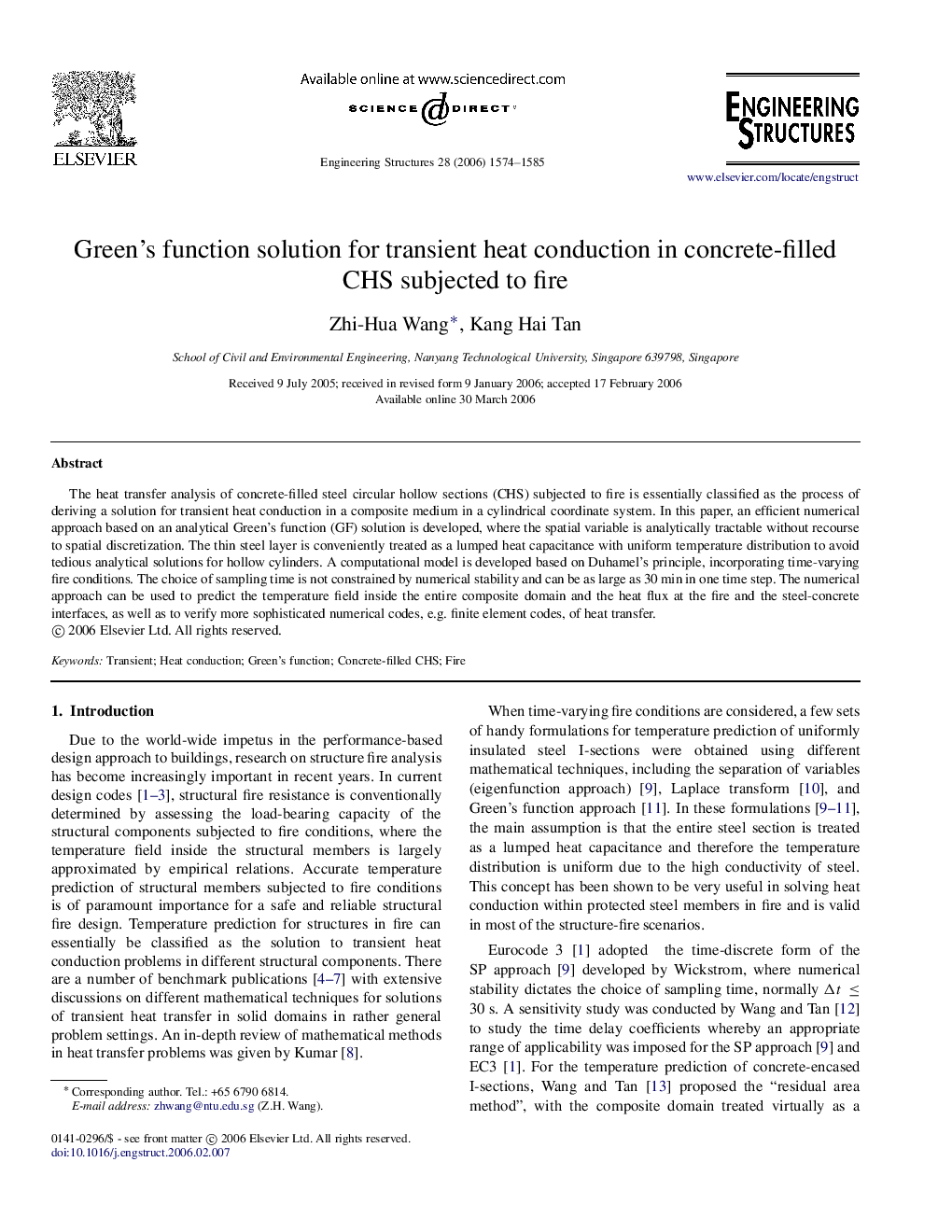| Article ID | Journal | Published Year | Pages | File Type |
|---|---|---|---|---|
| 269111 | Engineering Structures | 2006 | 12 Pages |
The heat transfer analysis of concrete-filled steel circular hollow sections (CHS) subjected to fire is essentially classified as the process of deriving a solution for transient heat conduction in a composite medium in a cylindrical coordinate system. In this paper, an efficient numerical approach based on an analytical Green’s function (GF) solution is developed, where the spatial variable is analytically tractable without recourse to spatial discretization. The thin steel layer is conveniently treated as a lumped heat capacitance with uniform temperature distribution to avoid tedious analytical solutions for hollow cylinders. A computational model is developed based on Duhamel’s principle, incorporating time-varying fire conditions. The choice of sampling time is not constrained by numerical stability and can be as large as 30 min in one time step. The numerical approach can be used to predict the temperature field inside the entire composite domain and the heat flux at the fire and the steel-concrete interfaces, as well as to verify more sophisticated numerical codes, e.g. finite element codes, of heat transfer.
